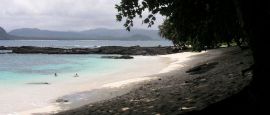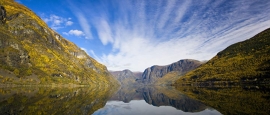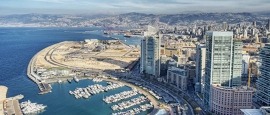See some spectacular waterfalls on São Tomé. Don't miss the Boca de Inferno (Hell's Mouth) seawater fountain and the Cascada São Nicolãu waterfall, near Pousada Boa Vista. There is also the Ilheu da Rolas (Turtledove Island) – ever popular with tourists and for good reason.
São Tomé e Príncipe things to see and do
Tourist offices
Address: Avenida 12 Julho, São Tomé, CP 40, Sao Tome and Principe
Tel: (2) 24245.
www.saotome.st
Witness the distinctive colonial architecture and atmosphere preserved in Santo Antonio, the main town of Príncipe. The town is famed for its colonial architecture and its churches, the largest of which is the main Roman catholic church.
If you’re a thrill seeker who likes to climb, then Sao Tome has two mountains that fit the bill. Pico de Principe is the lesser of the pair at 948m (128ft) summit, while the archipelago's highest mountain is Pico de São Tomé and is 2,024m (6,800ft) high.
Watch for whales in July to October, when humpback whales come to the waters around São Tomé. Dolphins are also a regular sight and can be seen at most times of the season. It’s fairly simple to book yourself on a whale watching boat trip and follow the whales down the coast for about eight hours.
The crystalline waters of São Tomé e Príncipe offer some of the best swimming, snorkelling and diving in West Africa. Beaches here have white and black sand and its seas are excellent for deep-sea fishing, particularly around Bom Bom Island.
If you like boobies, you’ll love São Tomé (stop sniggering in the back) because the island is teeming with these seabirds. The coast is also home to flamingos and ospreys, but twitchers will fine even more colourful species in the rainforest, which is packed with plenty of endemic mammals, amphibians and plants, too.
Enjoy one of the country’s few tourist resorts on the tiny island of Ilheu Bom Bom, situated off Príncipe's northern coast. The island is a popular haunt for holidaymakers looking to stay in the calming resorts of Sao Tome and Principe.
Explore the island of São Tomé, representing 90% of the total surface of the country. The capital of the same name is a picturesque town, with colonial Portuguese architecture and attractive parks. It’s worth bearing in mind that the wet season usually runs from October through to May.
Visit the manyroças (cocoa plantations) on Agostinho Neto, which is the largest plantation in the country and is a clear example of São Tomé’s colonial past. Other plantations include Agua Izé, where visitors can tour the estate by train, Monté Café and Ribeira Peixe.
See the ancient fishing town of São João dos Angolares and the fortress of São Sebastião, which also houses a museum with a collection of religious and colonial art. The town takes its name from the Angolan slaves who settled in the region in the sixteenth century.
Do you have any Feedback about this page?
© 2025 Columbus Travel Media Ltd. All rights reserved. No part of this site may be reproduced without our written permission, click here for information on Columbus Content Solutions.








 You know where
You know where